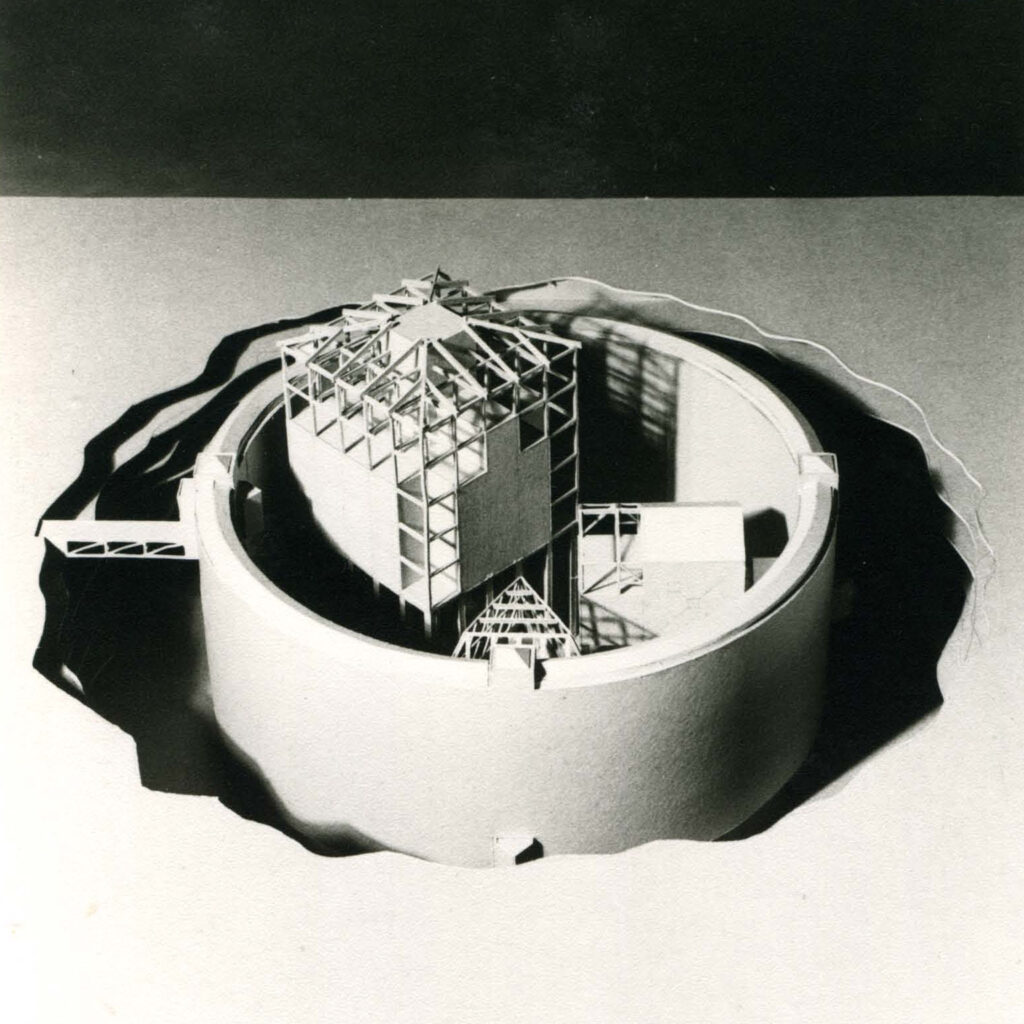Concept for 3d printed sculpture with parts printed and then assembled.

Abstract Artist Working in the Realm of Digital Media
My exploration of my “Model Citizens” continues with this new variation. I am creating my 3d models using autodesk Inventor Pro 2014. This animation was created and rendered also with autodesk inventor. This is the first part of the process to realizing these as sculpture where they will be rendered using 3d printing technology. The different parts will be printed separately and then assembled.
Revisiting my archives, here’s a project I did as a Student of Architecture at Pratt Institute in 1985. They were published in 1988 in The “Pratt Journal of Architecture – Form-Being-Absence” published by Rizzoli.
I thought hard about the project my Pratt studio professor Hanford Yang handed me, to design two houses that when completed felt like they belonged on imaginary sites. But I wanted to do more than just that. I wanted the houses to tell a story of why they belonged where they were placed.
I find a kind of freedom in my art that helps me escape pain. As I look back on this project I realize that I was doing the same thing with my architecture. The curvature of my spine in my twenties caused many episodes of pain. The conception of these houses, about the desire to escape gravity, to fly, to be free with HOUSE THAT WANTS TO FLY, and the reality of not being able to escape gravity, being trapped, with HOUSE HELD CAPTIVE was the story I was telling and a metaphor for the human condition. But perhaps subliminally, it was a metaphor for my deformed spine, wishing I could escape it. Below are the house’s story.
click on images to enlarge (except for mobile phones)

Along a sheer cliff where the pale between earth and sky is sharply delineated, the house precariously hangs by tenuous cords. Perched with the inflection of motion, it patiently waits to take flight.
The body of the house is dispositioned in a symmetrical arrangement as a pretense of stability. The long staircase descending through the earth, leads to the entry of the house, continues again, and is culminated by a bridge cantilevered out in space. Secondary staircases lead to a wing-like observation deck. This assemblage of parts is a clever trick. They construct a “flying machine” imagery so that flyers overhead may be fooled. However, from a more earthly perspective, the house is a mere building.
Like gravity, freedom is a constant endeavor to be maintained. Never will the house be able to escape this earth binding force, but the essence of its form is the quintessential emotion of freedom: FLYlNG.
Opposite Houses published in the
Pratt Journal of Architecture: Form; Being; Absence
Rizzoli Books 1988

The house is a microcosm of an oppressive regime. The composition is a scenario of order and domination.
The house is placed in a sinkhole (the borders of a nation). The sinkhole naturally oppresses in geographic terms. Within this domain is an arrangement of geometry’s. A circular ring places rigorous control over a square, golden rectangle and isosceles triangle, locking them in a static dialogue. Oppression is maintained through this austere order intolerable of change. The geometry’s live among each other in delusive equality but this is not a democratic cohabitation. The SQUARE dominates in size and has the advantage of peaking above and beyond the circle.
With this salient position, it can see the truth while the others are kept in the dark.